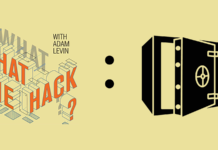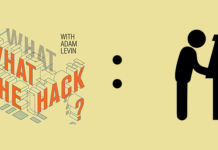

By now, nearly every American should know that a “credit report” and a “credit score” represent a measure of our personal financial integrity. Those reports and scores, for individuals, are kept and computed by a select number of large companies (like Equifax, TransUnion, FICO and Experian). Even though most of us have had little if any direct contact with these companies, the fact is that they are keeping files on us and that the reports and scores they generate have a major impact on the availability and cost of individual debt. One bad score can double the cost of a mortgage, triple the rate on a car loan, or, worst of all, prevent us from getting either of them.
Here’s what you may not know: just as the credit reporting agencies keep tabs on you, there are a dozen or so companies that keep tabs on corporations and governments. You’ve probably heard of them because they get a great deal of ink, since in perfect analogue to the situation of an individual, a bad credit rating can dramatically increase the rate of interest that a corporation or government must pay to borrow, usually by issuing bonds. The U.S. government officially approves these companies to issue these ratings, and thus they carry a great deal of weight with investors and analysts worldwide.
The best known of these rating agencies is Standard & Poor’s (S&P), which in addition to rating corporations, also rates particular bond issuances of these corporations, their bank debt, and even debt issued by governments, such as U.S. Treasury bills. In other words, when a company or the government decides to borrow money from the public to fund a particular project or initiative, S&P tells the world whether they think it’s a good investment.
Of course, like your credit reports, they’re not always accurate. For example, in the months and years leading up to the financial meltdown of 2008, many ratings agencies gave “AAA” ratings to mortgage backed securities that were anything but “AAA.” These officially “blessed,” sliced, diced and neatly packaged economic time-bombs were aggressively marketed by Wall Street and voraciously gobbled up by a huge swath of investors ranging from Pension Funds, to Main Street, to Scandinavian fishing villages. Because of bad investments in this exciting new investment vehicle, icons like Bear Stearns and Lehman Brothers imploded, seriously damaging the financial integrity of scores of multinational organizations and destroying the financial futures of millions of Americans and countless Danish fishermen.
Well, a funny thing happened on April 18th. S&P decided to issue a warning on U.S. government debt. A “warning” is not the same as a “downgrading;” U.S. government debt is still rated AAA—the highest rating available. However, in very blunt terms, S&P took the position that government borrowing is out of hand and thus changed its quite famous “Outlook” from stable to negative. U.S. government debt now totals approximately 94% of gross domestic product (GDP), making America No. 12 on the list of countries with the highest level of borrowing. Unfortunately, this year’s projected deficit will certainly take the debt total over 100% of GDP.
What precipitated S&P’s gloom are the recent, unusually mordant budget debates in Congress, and the upcoming brawl that is certain to occur over the expansion of the “debt ceiling.” Ever since 1917, Congress has mandated that government borrowing cannot exceed an amount set by statute. Sometime around July 8 of this year, federal borrowing will break through the current ceiling (a paltry $14.3 trillion dollars or, to put it another way, $14,300,000,000,000.00). Thus, the ceiling needs to be lifted or there is a possibility of truly catastrophic consequences. Recently, Treasury Secretary Tim Geithner said that if the ceiling is not lifted in a timely manner, the result would be a true depression that would make the meltdown of 2008 look “tame.” The government will have to pay more of our money to borrow money, which will lead to higher deficits, a stillborn recovery, higher unemployment and higher rates for consumers and businesses if we want to borrow money, and so on, and so on, and so on. Nothing more, nothing less than an economic death spiral.
In fact, when S&P made its announcement the Dow Jones (another creation of S&P) dropped about 250 points but recovered somewhat before the session ended. The price of gold, which tends to rise in tandem with economic uncertainty, approached $1,500 an ounce. Markets around the world tumbled in sympathy and there was a glimpse of what the reaction would be if the United States—the most reliable borrower in history—actually defaulted on its debt. Lending credence to the once unthinkable thought that the U.S. would not pay its bills is the fact that a large group of fractious freshmen congressmen have indicated, in no uncertain terms, that they are against lifting the ceiling.
As recently as 2004, there was a similar problem that didn’t generate nearly as much fanfare as we are seeing today. In that year the debt ceiling was hit on October 14, and wasn’t lifted until November 16. Somehow the Treasury muddled through using some creative accounting methods that seemed, at least, not to exceed the limit until it was officially raised in what was presumably a burst of Thanksgiving good cheer. I, for one, do not believe that the debate this time around will result in utter financial chaos, and I do not believe that economists and investors believe it either. Instead, this debate along with S&P’s announcement and all of the inevitable hysteria that you will hear as we approach the inevitable ceiling smackdown is ultimately a cautionary tale, and it should be viewed as such.
The government’s bond ratings are very similar to your credit scores. If you borrow too much, it will show up on your credit report as a negative, your scores will decline commensurately, and you will face significant financial fallout. We all have a debt ceiling. Unlike the government’s, yours is not set by a simple statute with a precise number. Nonetheless, you know when you’ve climbed too far up the wall. You start making only minimum payments on your credit cards. You put off the decision to buy or lease that new car. You get calls from creditors because your payments get later and later.
Borrowing too much is a very slippery slope. In the case of the U.S. government, interest costs are approaching 10% of GDP; therefore, part of the need to lift the ceiling is caused by the egregious amounts necessary to service the existing debt. When you borrow too much, there is no solution but restraint and hard work. When an individual has reached his or her personal debt ceiling, the only option is to decrease spending and increase income. That could mean getting a second job as well as no more dinners out for a while. The government has to do the same thing. They’ve got to cut spending (which you’ve been hearing a lot about lately) and increase tax revenue (which hardly anyone, other than the President, really wants to talk about).
Frankly, all things being equal, it seems to me that the government is in a pretty enviable position. Our government will be 235 years old in July, about four days before the debt ceiling is hit. I’m confident that when push comes to shove our elected leaders will simply vote to increase the debt ceiling. I’m less confident they’ll come up with a sensible plan to pay down the debt that employs both sensible spending cuts and tax increases. But I’m holding out hope.
Unfortunately, real people aren’t afforded the same luxuries as the government. When we hit our debt ceiling, nasty people arrive at our house and start repossessing everything in sight. Somehow, I just don’t foresee anyone coming to repossess Air Force One.
Originally posted at Credit.com.









